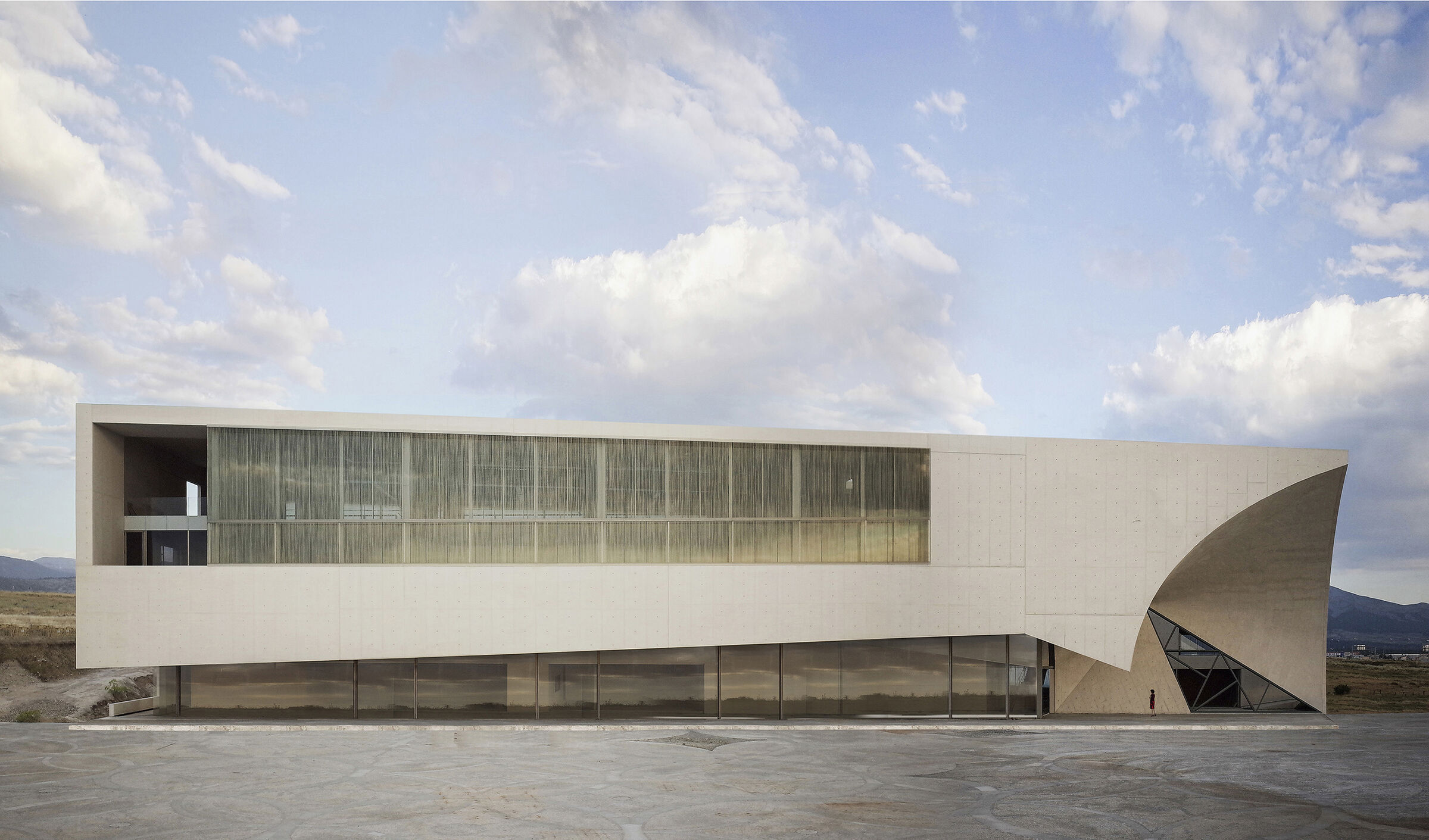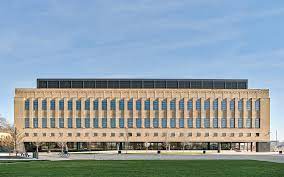Architectural Entrepreneurship And Economic Development - Building A Sustainable Future
In the dynamic realm of architectural entrepreneurshipplays a pivotal role not only in shaping innovative designs but also in fostering economic development on local and global scales. This article delves into the multifaceted relationship between architectural entrepreneurship and economic growth, exploring key facets that drive progress and sustainability.
Architectural Entrepreneurship Unveiled - Redefining Innovation In The Architectural Landscape
In the continually evolving realm of architecture, the emergence of architectural entrepreneurship stands as a transformative force, redefining conventional practices. This entrepreneurial spirit goes beyond established norms, embracing a dynamic fusion of risk-taking, creativity, and business acumen. For more insights on the intersection of architecture and entrepreneurship, explore Commercial Architecture Magazine.
Breaking The Mold
Architectural entrepreneurship is a departure from the familiar, an exploration into uncharted territories of creativity and business dynamics. Traditional architectural practices often adhere to established norms, but entrepreneurial ventures dare to break free from the mold. This departure allows for experimentation, pushing the boundaries of what is conceivable in architectural design.
Embracing Risk
At the core of architectural entrepreneurship lies a willingness to embrace risk. This courageous approach to experimentation fosters a culture of innovation. Entrepreneurs within the architectural sphere are not afraid to challenge preconceived notions, welcoming the unknown as a source of inspiration. It is through this embrace of risk that groundbreaking ideas emerge, shaping the architectural landscape in unprecedented ways.
Creative Renaissance
Architectural entrepreneurship unleashes a creative renaissance within the industry. Freed from the constraints of convention, entrepreneurs infuse their designs with a unique blend of aesthetic prowess and functionality. The result is a departure from the mundane, with architectural creations that not only stand as structures but as artistic expressions, contributing to the cultural richness of the built environment.
The Business Acumen Paradigm
Architectural entrepreneurship is not solely about design; it also entails a keen understanding of business dynamics. Entrepreneurs in this field master the delicate balance between artistic vision and economic viability. This business acumen paradigm ensures that innovative designs are not only aesthetically pleasing but also economically sustainable, fostering a symbiotic relationship between creativity and financial success.
Transformative Impact On Design Processes
The infusion of entrepreneurial spirit brings about a transformative impact on design processes. Unlike traditional approaches that may follow a linear trajectory, entrepreneurial ventures introduce an iterative and adaptive mindset. This dynamic approach to design enables architects to respond to changing needs, emerging technologies, and evolving societal demands, resulting in designs that are not only relevant but also future-proof.
The Significance Of Entrepreneurial Architecture
This article emphasizes the importance of entrepreneurial architecture in enhancing our comprehension of the modern university and its Third Mission, focusing on university entrepreneurship. By synthesizing diverse literatures into a cohesive theoretical framework, entrepreneurial architecture offers a practical lens for shaping public policy.
For large firms, particularly managers aiming to foster innovation, adopting entrepreneurial architecture brings practical benefits. Transforming organizational structures into an Entrepreneurial Architecture(EA) involves implementing entrepreneurship measures.
This strategic shift creates a conducive framework, fostering an environment where innovation can thrive, thereby promoting organizational growth and adaptability.
The Potential Of Architects In Entrepreneurship
In the dynamic and globally interconnected world of today, the architectural field is undergoing a continuous process of reinvention. While innovation has ushered in new building technologies and transformed client communication methods, a significant portion of the architecture industry remains entrenched in traditional practices.
The architectural landscape has witnessed significant strides in innovation, from sustainable design practices to the integration of advanced technologies. However, a considerable portion of the industry remains tethered to traditional business models. Architects commonly depend on project-based income, relying on client fees to fund their operations. This conventional approach, though proven, can limit the growth potential and resilience of architectural firms in today's rapidly changing business environment.
Unleashing Entrepreneurial Potential
Diversification Of Revenue Streams
Architects possess untapped entrepreneurial potential that can be harnessed to redefine the industry. One avenue for exploration is diversifying revenue streams. Beyond traditional project fees, architects can explore complementary services such as consulting, design workshops, or even creating and licensing proprietary architectural solutions. This diversification not only provides additional income but also establishes architecture firms as multifaceted entities adaptable to diverse client needs.
Embracing Technological Advancements
Entrepreneurial architects can leverage technological advancements to streamline processes and enhance client interactions. Embracing virtual reality (VR) and augmented reality (AR) for immersive design experiences, employing Building Information Modeling (BIM) for efficient project management, and utilizing digital marketing strategies can set entrepreneurial architects apart in a competitive market. Integrating these technologies not only enhances the client experience but also positions architecture firms as pioneers in the digital age.
Collaborative Innovation And Partnerships
Architectural entrepreneurship extends beyond individual firms. Collaborative innovation through partnerships with tech startups, construction firms, or other complementary industries opens new frontiers. By fostering a culture of collaboration, architects can access a broader range of expertise, diversify project capabilities, and tap into emerging markets that traditional models might overlook.
The Economic Impact Of Architectural Entrepreneurship - Building Prosperous Communities
Architectural entrepreneurship goes beyond shaping physical structures; it plays a pivotal role in fostering economic development. The following aspects shed light on how this entrepreneurial spirit contributes to job creation, stimulates local economies, and acts as a catalyst for economic dynamism.
Job Creation And Local Economies
One of the cornerstones of architectural entrepreneurship's impact on economic development is its ability to generate employment opportunities. As entrepreneurial ventures within the architectural sphere thrive, they emerge as vital hubs of employment. This, in turn, stimulates local economies, creating a positive feedback loop of economic growth.
The ripple effect of job creation extends across various sectors, encompassing a spectrum of skilled professionals. Architects, engineers, project managers, and craftsmen find employment within these ventures, providing a diverse range of opportunities for individuals with various skill sets. This not only contributes to a more robust local job market but also enhances the overall economic vitality of the community.
Fostering Small Businesses And Startups
Architectural entrepreneurship often acts as a catalyst for the birth and growth of small businesses and startups within the industry. These agile entities bring fresh perspectives, innovative solutions, and a competitive edge to the architectural market. By challenging established norms and introducing novel ideas, these smaller ventures not only diversify the industry landscape but also contribute significantly to economic dynamism.
The creation of small businesses and startups in the architectural sector injects vitality into local economies. These entities become key players in the economic ecosystem, fostering healthy competition and driving the industry towards continuous improvement. As they compete for projects and clients, they elevate the standards of architectural services, pushing the boundaries of creativity and innovation.
Moreover, the presence of small architectural businesses can have a multiplier effect on the broader economy. They often engage with local suppliers, service providers, and other businesses, creating a network of economic interdependencies. This interconnectedness contributes to the overall economic resilience of the community.
Sustainable Architecture As A Driver Of Economic Growth - Nurturing Prosperity And Environmental Stewardship
Architectural entrepreneurship finds synergy with sustainability goals, propelling the adoption of green building practices that not only reduce environmental impact but also act as catalysts for economic growth. Here, we explore how the marriage of sustainable design and entrepreneurial spirit contributes to economic resilience.
Green Innovations And Cost-Efficiency
Architectural entrepreneurship champions sustainable innovations that go beyond environmental stewardship. It taps into the economic benefits of green building practices, emphasizing the long-term advantages of sustainable designs. The incorporation of energy-efficient technologies and materials not only reduces the ecological footprint but also translates into substantial cost savings.
Sustainable architecture, with its emphasis on energy efficiency, leads to reduced operational costs for building owners. Lower energy consumption means decreased utility bills, contributing to long-term financial savings. Moreover, the emphasis on durability and low-maintenance materials minimizes lifecycle costs, further enhancing the economic viability of sustainable structures.
For occupants, energy-efficient buildings create comfortable environments with optimized heating, cooling, and lighting. This not only enhances occupant well-being but also contributes to increased productivity. The economic advantages of sustainable architecture, therefore, extend beyond construction and maintenance, positively impacting both owners and users.
Government Incentives And Economic Stimulus
Governments worldwide recognize the pivotal role of sustainable architecture in achieving environmental targets and fostering economic growth. Architectural entrepreneurs focused on eco-friendly designs often find themselves at the forefront of government-supported initiatives.
Governments incentivize sustainable practices through a variety of means, including grants, tax incentives, and subsidies. These incentives not only make sustainable projects financially viable but also encourage architectural entrepreneurs to prioritize eco-friendly solutions. The symbiotic relationship between governments and architectural entrepreneurs serves as a powerful catalyst for broader economic stimulus.
By providing financial support and regulatory frameworks that promote sustainable practices, governments stimulate the growth of a green economy. This, in turn, creates a ripple effect across industries, generating employment opportunities, fostering innovation, and positioning countries at the forefront of sustainable development.
Navigating Global Markets - Architectural Firms As Economic Players
Architectural entrepreneurship, a dynamic force within the industry, transcends geographical boundaries, positioning architectural firms as influential economic players on the global stage. This section explores the dual facets of international expansion and the challenges entrepreneurial ventures encounter, highlighting the pivotal role architectural firms play in shaping cross-cultural economic growth.
International Expansion And Economic Opportunities
Architectural entrepreneurship's global reach extends far beyond local landscapes. Firms, driven by an entrepreneurial spirit, actively explore international markets, presenting a myriad of economic opportunities. This expansion not only broadens the horizon for architectural innovations but also paves the way for diverse economic engagements.
As architectural firms venture into international territories, they bring with them a wealth of design expertise and cultural insights. Collaborations with international partners foster knowledge exchange, creating a melting pot of ideas that transcend cultural boundaries. This cross-pollination of creativity contributes not only to the advancement of architectural designs but also to the enrichment of the global architectural discourse.
The economic benefits of international expansion are multifaceted. Architectural firms become conduits for economic growth, establishing networks that transcend borders. Projects undertaken globally not only showcase the prowess of architectural entrepreneurship but also contribute to the economic development of the regions in which they operate. From job creation to infrastructure development, the economic impact of architectural firms in international markets is profound and far-reaching.
Challenges And Adaptation To Economic Variations
While international expansion offers a plethora of opportunities, architectural firms, especially those led by entrepreneurs, must navigate the intricacies of global economic fluctuations. Adapting to currency variations, market demands, and geopolitical changes becomes a strategic imperative.
Architectural entrepreneurs demonstrate resilience and agility as they confront economic challenges on the global stage. Currency fluctuations, for example, can impact project costs and profit margins. Successful firms strategically manage these variations, employing financial instruments or adjusting pricing structures to mitigate risks.
Market demands and cultural nuances vary from one region to another, requiring adaptability in design and business approaches. Geopolitical changes can introduce uncertainties that impact project timelines and resource availability. Architectural entrepreneurs adept at anticipating and responding to these challenges position their firms as not only design innovators but also economic influencers on the global scale.
Case Studies - Architectural Entrepreneurs Driving Economic Change
Case 1 - Sustainable Urban Development Initiatives In Barcelona, Spain
In the heart of Barcelona, Spain, architectural entrepreneurs have played a pivotal role in spearheading sustainable urban development initiatives that transcend the boundaries of traditional city planning. The cityscape, once characterized by historical charm, has evolved into a model of eco-conscious innovation.
Architectural visionaries in Barcelona embraced sustainability by incorporating green spaces, energy-efficient buildings, and eco-friendly infrastructure into the urban fabric. This holistic approach not only elevated the aesthetic appeal of the city but also contributed to a more sustainable and resilient urban environment.
The integration of green spaces provided citizens with recreational areas, fostering a sense of community and well-being. Simultaneously, the emphasis on energy-efficient buildings and eco-friendly infrastructure reduced the city's environmental impact. The economic benefits of these initiatives were manifold – the enhanced attractiveness of the city prompted increased tourism, local businesses thrived, and, perhaps most significantly, investment flowed into sustainable urban projects.
Barcelona's case stands as a testament to how architectural entrepreneurship, when coupled with sustainable principles, can drive economic revitalization, transforming a city into a beacon of innovation and environmental consciousness.
Case 2 - Adaptive Reuse And Economic Regeneration In Detroit, USA
In the post-industrial landscape of Detroit, USA, architectural entrepreneurs embarked on a transformative journey of economic regeneration through adaptive reuse. Faced with abandoned structures that once symbolized the city's industrial prowess, these entrepreneurs saw an opportunity for renewal.
Entrepreneurial ventures in Detroit creatively repurposed and transformed derelict buildings into vibrant spaces for living and commerce. Abandoned warehouses became lofts, factories turned into creative hubs, and forgotten spaces were reborn as community centers. This adaptive reuse not only revitalized neighborhoods but also laid the groundwork for a broader economic resurgence.
The economic impact of these initiatives was profound. The revitalization of once-neglected areas attracted new residents, businesses, and investors. Property values rose, local businesses thrived, and a sense of pride and community was rekindled. Detroit'sstory became a blueprint for cities grappling with post-industrial challenges, demonstrating that architectural entrepreneurship, when harnessed for adaptive reuse, can be a catalyst for economic regeneration.
Architectural Entrepreneurship - FAQs
What Is Entrepreneurship Architecture?
- Entrepreneurial architecture integrates entrepreneurial principles into traditional architectural practices.
- It involves adopting a business-oriented mindset and innovative approaches within the field of architecture.
- Architects engaged in entrepreneurial architecture explore new business models, create proprietary solutions, and contribute to economic development through their architectural endeavors.
Can An Architect Become An Entrepreneur?
- Architects can indeed become entrepreneurs by embracing a mindset that goes beyond traditional design roles.
- Entrepreneurial architects actively seek diverse opportunities, such as exploring new revenue streams and leveraging technology for innovative solutions.
- The entrepreneurial approach allows architects to shape their careers dynamically and contribute to both the creative and business aspects of architecture.
Can Architects Start Their Own Business?
- Architects have the potential to start and run their own businesses, establishing architectural firms.
- Entrepreneurial architects may go beyond traditional roles, offering services such as consulting, project management, and innovative design solutions.
- Starting an architectural business allows architects to exercise creative freedom, contribute to the industry, and shape their professional destinies.
Conclusion
Architectural entrepreneurship stands as a driving force behind economic development, transcending the conventional boundaries of the industry. Through job creation, sustainable practices, and global engagement, architectural entrepreneurs play a pivotal role in shaping a more economically vibrant and sustainable future. As the architectural landscape continues to evolve, the entrepreneurial spirit remains a beacon, guiding the industry towards innovation, growth, and lasting economic impact.





